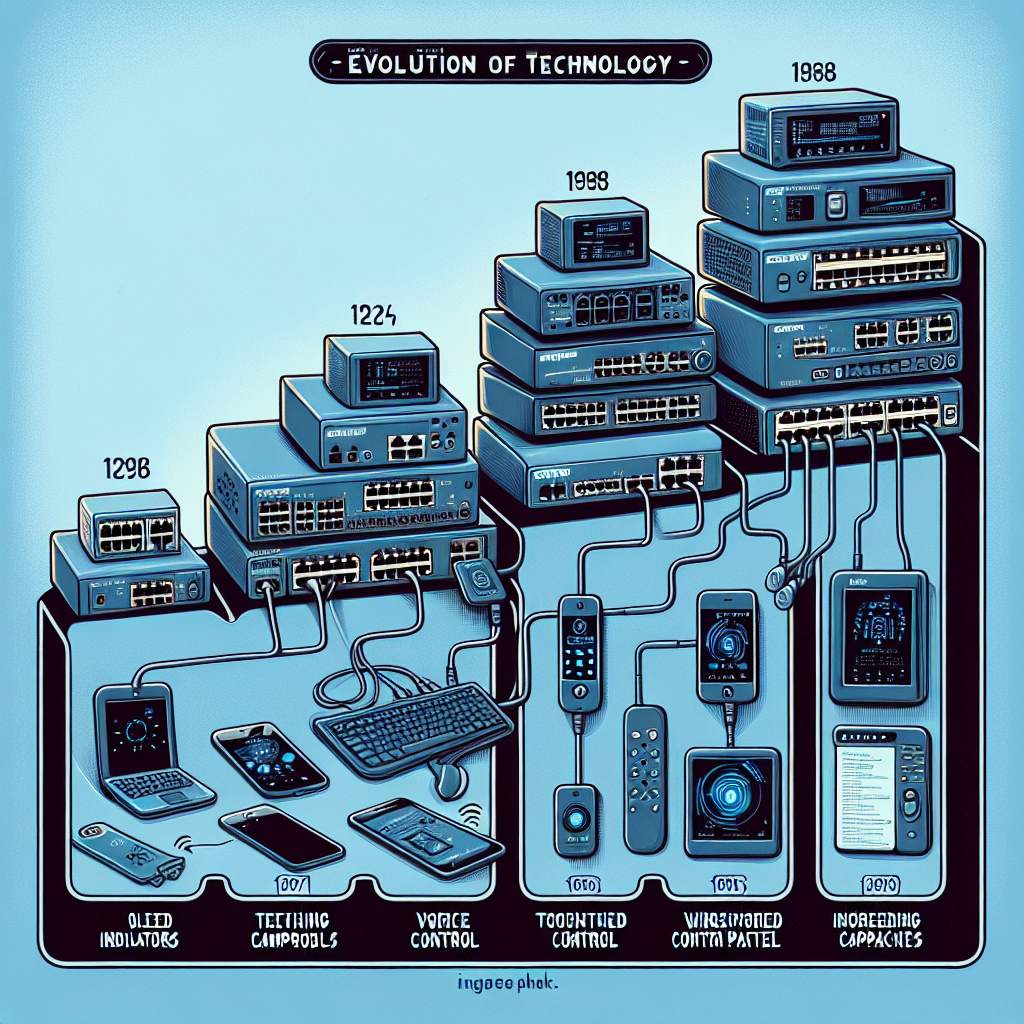Your cart is currently empty!
The Evolution of Cisco Switches: A Look at the Latest Technology

Cisco Systems, Inc. is a multinational technology conglomerate that specializes in networking equipment. The company has been a leader in the networking industry for decades, constantly pushing the boundaries of innovation and developing cutting-edge solutions for businesses around the world. One of Cisco’s most popular products is its line of switches, which are used to connect devices within a network and facilitate communication between them.
Over the years, Cisco switches have evolved significantly, incorporating the latest technology to meet the changing needs of businesses in an increasingly digital world. In this article, we will take a look at the evolution of Cisco switches and explore some of the latest technologies that have been integrated into their design.
Early Cisco switches were relatively simple devices that were used primarily to connect computers within a local area network (LAN). These switches operated at lower speeds and had limited functionality compared to modern switches, which are capable of handling much higher data rates and supporting a wide range of features.
One of the key advancements in Cisco switches has been the integration of advanced switching technologies, such as virtual LANs (VLANs) and quality of service (QoS) capabilities. VLANs allow network administrators to segment a single physical network into multiple virtual networks, each with its own set of policies and security settings. QoS capabilities, on the other hand, prioritize certain types of network traffic over others, ensuring that critical applications and services receive the necessary bandwidth and latency requirements.
Another major advancement in Cisco switches is the integration of Power over Ethernet (PoE) technology. PoE allows switches to deliver power to connected devices, such as IP phones, security cameras, and wireless access points, over the same Ethernet cable that is used for data transmission. This eliminates the need for separate power supplies and simplifies the deployment of network infrastructure.
In recent years, Cisco has also introduced software-defined networking (SDN) capabilities into its switches, enabling network administrators to centrally manage and automate network operations using software-based controllers. SDN allows for greater flexibility and scalability in network deployments, as well as improved visibility and security.
The latest generation of Cisco switches also incorporates artificial intelligence (AI) and machine learning (ML) technologies to enhance network performance and security. These switches are equipped with advanced analytics capabilities that can detect and mitigate network threats in real-time, as well as optimize network traffic based on usage patterns and trends.
Overall, the evolution of Cisco switches has been driven by a relentless focus on innovation and a commitment to meeting the evolving needs of businesses in a rapidly changing technological landscape. With the integration of advanced technologies such as VLANs, QoS, PoE, SDN, AI, and ML, Cisco switches continue to set the standard for network infrastructure solutions and play a crucial role in facilitating digital transformation and enabling the next generation of networking capabilities.

Leave a Reply